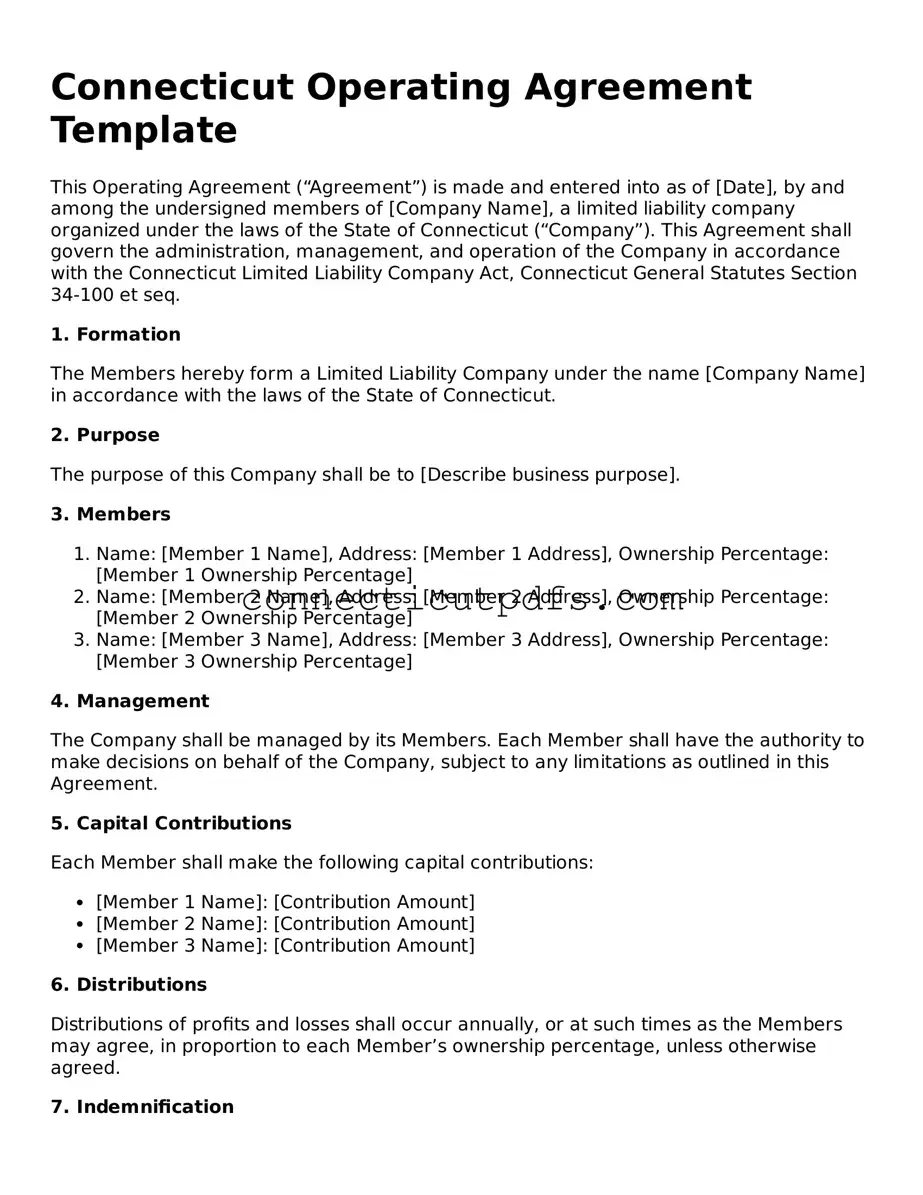Connecticut Operating Agreement Template
This Operating Agreement (“Agreement”) is made and entered into as of [Date], by and among the undersigned members of [Company Name], a limited liability company organized under the laws of the State of Connecticut (“Company”). This Agreement shall govern the administration, management, and operation of the Company in accordance with the Connecticut Limited Liability Company Act, Connecticut General Statutes Section 34-100 et seq.
1. Formation
The Members hereby form a Limited Liability Company under the name [Company Name] in accordance with the laws of the State of Connecticut.
2. Purpose
The purpose of this Company shall be to [Describe business purpose].
3. Members
- Name: [Member 1 Name], Address: [Member 1 Address], Ownership Percentage: [Member 1 Ownership Percentage]
- Name: [Member 2 Name], Address: [Member 2 Address], Ownership Percentage: [Member 2 Ownership Percentage]
- Name: [Member 3 Name], Address: [Member 3 Address], Ownership Percentage: [Member 3 Ownership Percentage]
4. Management
The Company shall be managed by its Members. Each Member shall have the authority to make decisions on behalf of the Company, subject to any limitations as outlined in this Agreement.
5. Capital Contributions
Each Member shall make the following capital contributions:
- [Member 1 Name]: [Contribution Amount]
- [Member 2 Name]: [Contribution Amount]
- [Member 3 Name]: [Contribution Amount]
6. Distributions
Distributions of profits and losses shall occur annually, or at such times as the Members may agree, in proportion to each Member’s ownership percentage, unless otherwise agreed.
7. Indemnification
The Company shall indemnify its Members and manage members to the fullest extent permitted by Connecticut law against any and all expenses and liabilities reasonably incurred in connection with the Company.
8. Amendments
This Agreement may be amended only by a written agreement signed by all Members.
9. Governing Law
This Agreement shall be governed by the laws of the State of Connecticut.
10. Additional Provisions
Any additional provisions agreed upon by the Members may be added here:
[Insert Additional Provisions]
IN WITNESS WHEREOF, the undersigned Members have executed this Operating Agreement as of the date first above written.
_________________________
[Member 1 Name]
_________________________
[Member 2 Name]
_________________________
[Member 3 Name]
